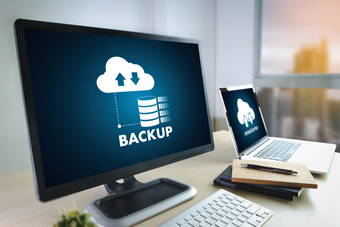Data and Server Backup Management for Your Business
Sunday, August 11th, 2019 Let’s face it, the most important asset your business has is data – without it, your business could be lost. Given that, it’s surprising how many businesses don’t do enough to protect this incredibly valuable asset. Whether your business is small or large, it is imperative to have a data backup and recovery strategy in place so you’re not scrambling to put something together after a data loss or breach occurs. With such a plan, you can have your systems backed up and running quickly even in a worst-case scenario.
Let’s face it, the most important asset your business has is data – without it, your business could be lost. Given that, it’s surprising how many businesses don’t do enough to protect this incredibly valuable asset. Whether your business is small or large, it is imperative to have a data backup and recovery strategy in place so you’re not scrambling to put something together after a data loss or breach occurs. With such a plan, you can have your systems backed up and running quickly even in a worst-case scenario.
Here at my PC Techs, data backup and recovery are just two of the many computer maintenance functions we perform for our clients, from both a prevention and recovery perspective. Today’s blog will deal with the various types of data backup, how they are different, and the need to maintain and update your data on an ongoing basis; our next post will deal with the recovery process.
Overview
Let’s go over a few terms before we get too far into the types of backups. First off, a data backup is simply a copy of all your business’ records and data, stored in a storage system that is separate from your regular business operating system. This could be in the cloud, an off-site storage facility, or in a separate, on-site location. These backups can take many forms depending on what you are backing up, how secure it needs to be and how quickly you may need to retrieve it in the event of a data loss, hardware failure or theft. With the proper system, you will be able to restore data to your business computers or servers quickly, so your business is equipped to continue operating seamlessly.
Even the most comprehensive data backup and recovery plan is useless, however, if you don’t back up the data frequently – if you suffer a data loss event and the last backup was a week or 10 days prior, you have just taken a giant step backward.
Types of Backup
There are four primary types of backup, each of which has its own specific benefits and levels of security. These types of backup are data; system; database; and e-mail. Let’s take a closer look at each of these types of backup and exactly what each of them protects.
Data Backup
A data backup is exactly what it sounds like – it makes copies of your business’ files from their desktops or work stations and assures that data and information your company needs to operate is secure and available. Data backups are a good general solution to keep your business up and running in case of a data loss or breach, but does not back up your operating system, databases, or e-mail, any of which could be lost in a hard drive failure. It does, however, give your employees access to all their work files, and the primary cause of data loss is human error – accidentally deleting a file.
System Backup
While a data backup provides a baseline level of protection, a far more comprehensive solution is a system backup. This goes well beyond a standard data backup, saving operating systems, programs and settings as well. With a system backup, should you suffer from hardware failure or theft, a computer’s entire operating system can be restored including all the software and configurations. It also is an excellent tool to have in the event of a software upgrade: by constantly updating and saving your system settings, it allows you to implement changes in the system and know there is a reliable backup in place to protect you from crashes or accidental data loss. System updates are generally ran nightly and, in the event of a server with mirroring RAID drives, in real-time.
Database Backup
This is exactly what it sounds like – a copy of the back-end databases for your production software or servers. Any business that relies on a software solution to manage projects, accounting, or reaching out to clients or prospects on a regular basis should consider this type of backup. Like a system backup, this too is a “snapshot” backup that saves everything up to the moment of the last backup. With this type of backup, you also will have access to the backup to restore your database without affecting other system operations.
E-Mail Backup
E-mail is an extremely important communication tool for modern business. Most businesses use email heavily all day long, both to respond to incoming messages, as well as searching previous messages to recall prior conversations. And e-mail data is lost more often than you think, but not from servers crashing or hard drives failing. The most common way e-mail in formation is lost is by human error: accidentally hitting the delete button on an e-mail message or contact. To protect against this, my PC Techs recommends backing up your e-mail so your contacts, messages, calendars and other vital information can be retrieved in case of either a system failure or human error.
Which Backup Option is Best for Your Company?
Obviously if your budget allows it, implementing all these backup options provides your business the greatest security. The cost of these services varies depending on the size of your network. If you are looking for computers experts who are capable of helping you setup and manage the correct backup solutions for your business at a fair price, you’ve come to the right place. my PC Techs has delivered expert IT solutions you can trust for over 15 years and we can help develop, install, and implement a data backup and recovery plan that is capable of handling virtually any event.
Give us a call today at 602-456-0150 for a free systems evaluation and get recommendations for a custom data, system, database and/or e-mail backup plan. We look forward to the opportunity to help!







